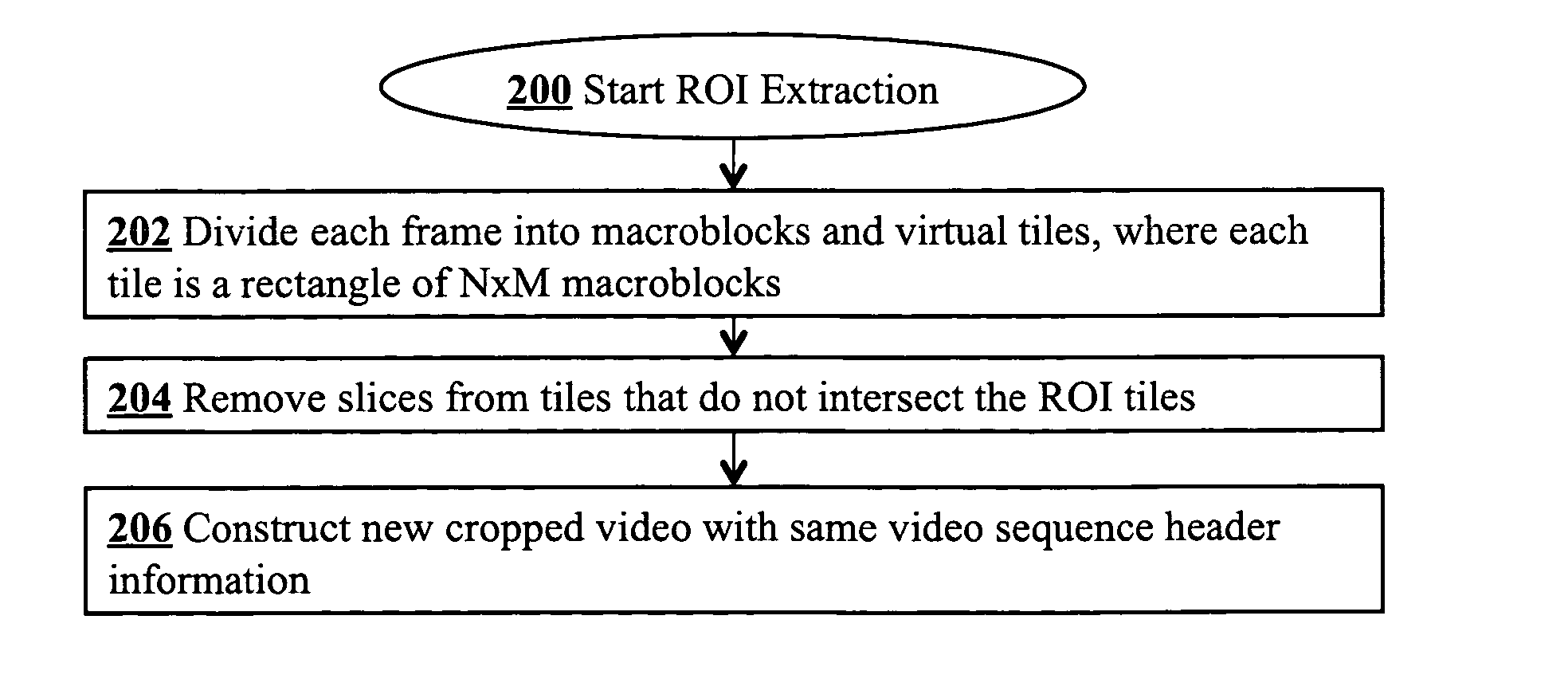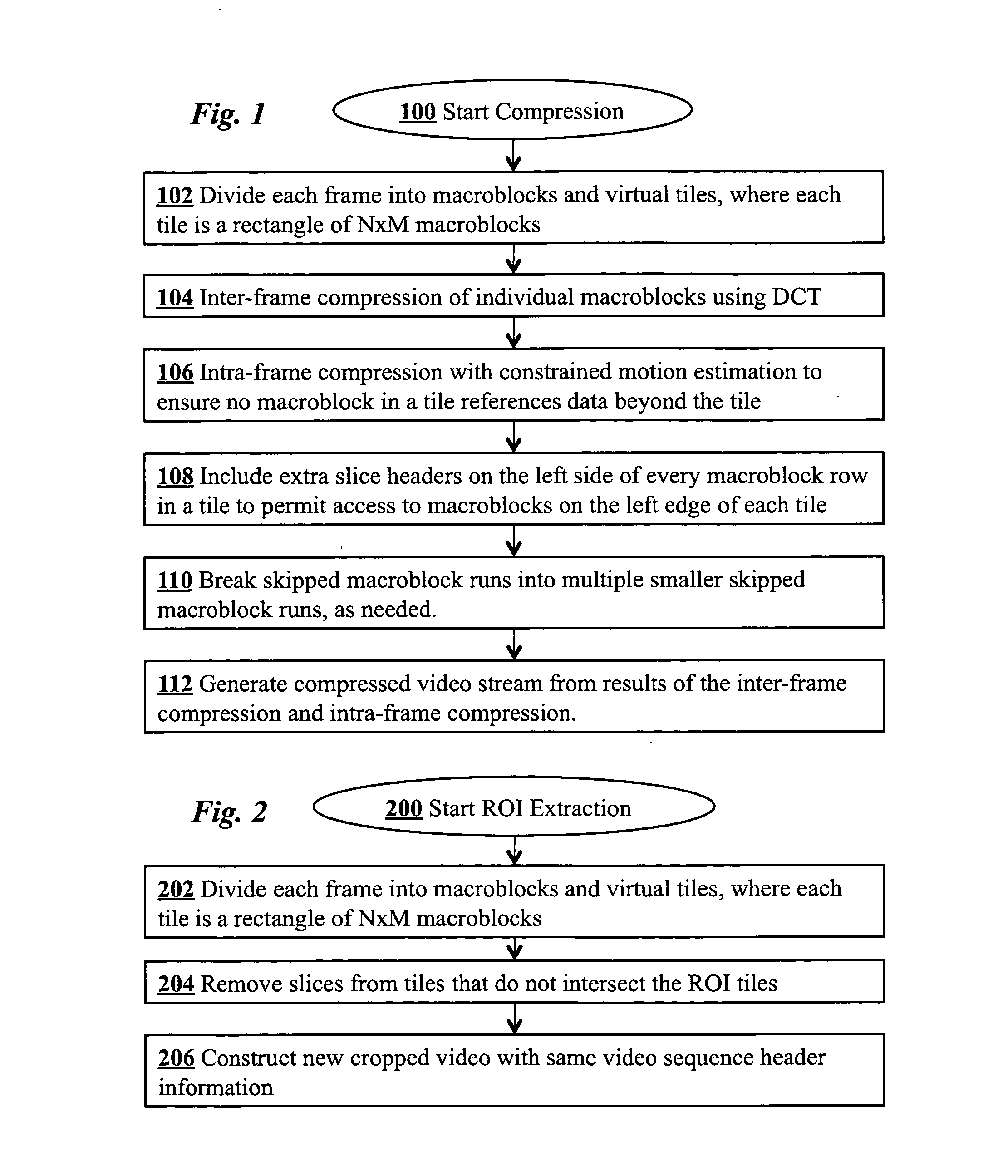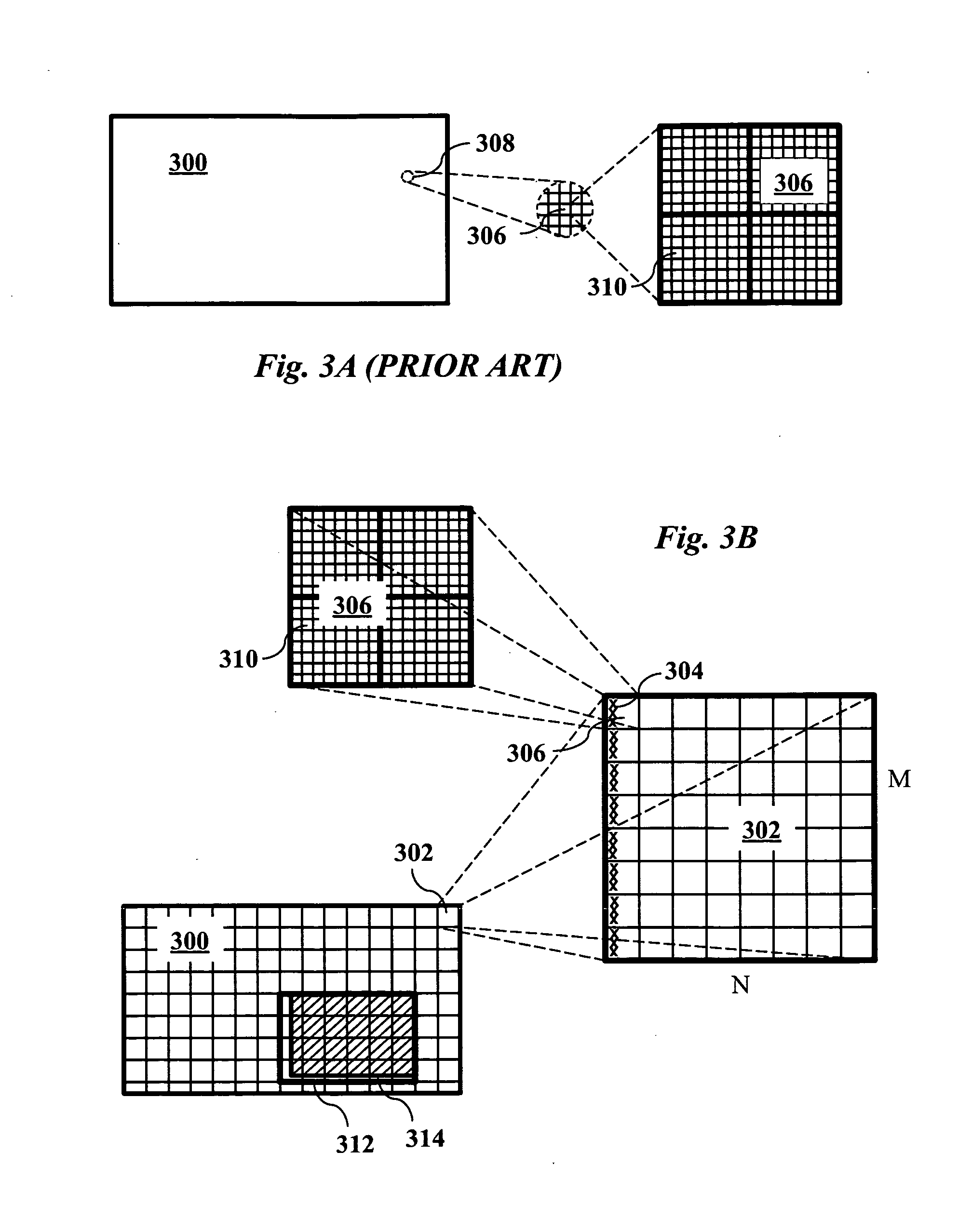Supporting region-of-interest cropping through constrained compression
a compression and region-of-interest technology, applied in the field of image processing techniques, can solve the problems of reducing image quality, computational cost, and brute force approach, and achieve real-time (or faster) region-of-interest cropping
- Summary
- Abstract
- Description
- Claims
- Application Information
AI Technical Summary
Benefits of technology
Problems solved by technology
Method used
Image
Examples
Embodiment Construction
[0021]Steps of a preferred embodiment of an encoding technique are shown in FIG. 1. The technique encodes a video stream such that the resulting stream supports efficient region-of-interest cropping. The compression begins at step 100 and presupposes a sequence of video frames are provided. In step 102, each frame of the video sequence is divided into macroblocks, as is customary in standard MPEG-2 encoding. For high definition, for example, the frame will have 120 macroblocks across, i.e., 1920 pixels across. Unlike conventional MPEG-2 encoding, however, the frame is also divided into virtual tiles, each of which is a set of multiple contiguous macroblocks arranged in a rectangular array. FIG. 3B illustrates an example of a high definition (HD) frame 300 which is divided into an array of tiles, such as tile 302. A typical tile such as tile 302 is an array of N×M macroblocks 306, and each macroblock 306 is an array of 16×16 pixels (e.g., pixel 310). The tiling structure is one of th...
PUM
 Login to View More
Login to View More Abstract
Description
Claims
Application Information
 Login to View More
Login to View More - R&D
- Intellectual Property
- Life Sciences
- Materials
- Tech Scout
- Unparalleled Data Quality
- Higher Quality Content
- 60% Fewer Hallucinations
Browse by: Latest US Patents, China's latest patents, Technical Efficacy Thesaurus, Application Domain, Technology Topic, Popular Technical Reports.
© 2025 PatSnap. All rights reserved.Legal|Privacy policy|Modern Slavery Act Transparency Statement|Sitemap|About US| Contact US: help@patsnap.com



